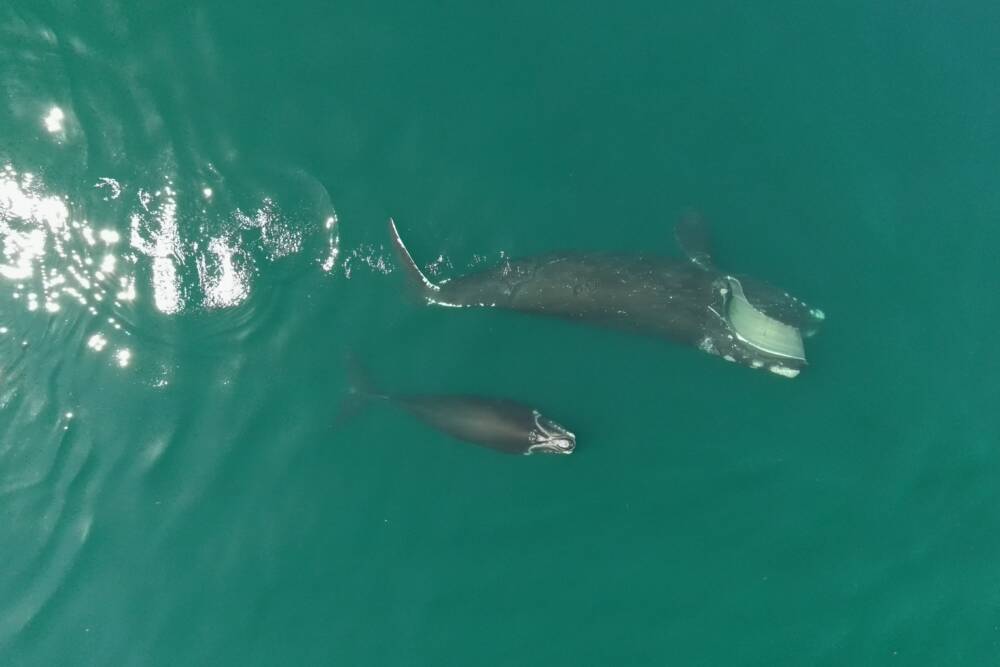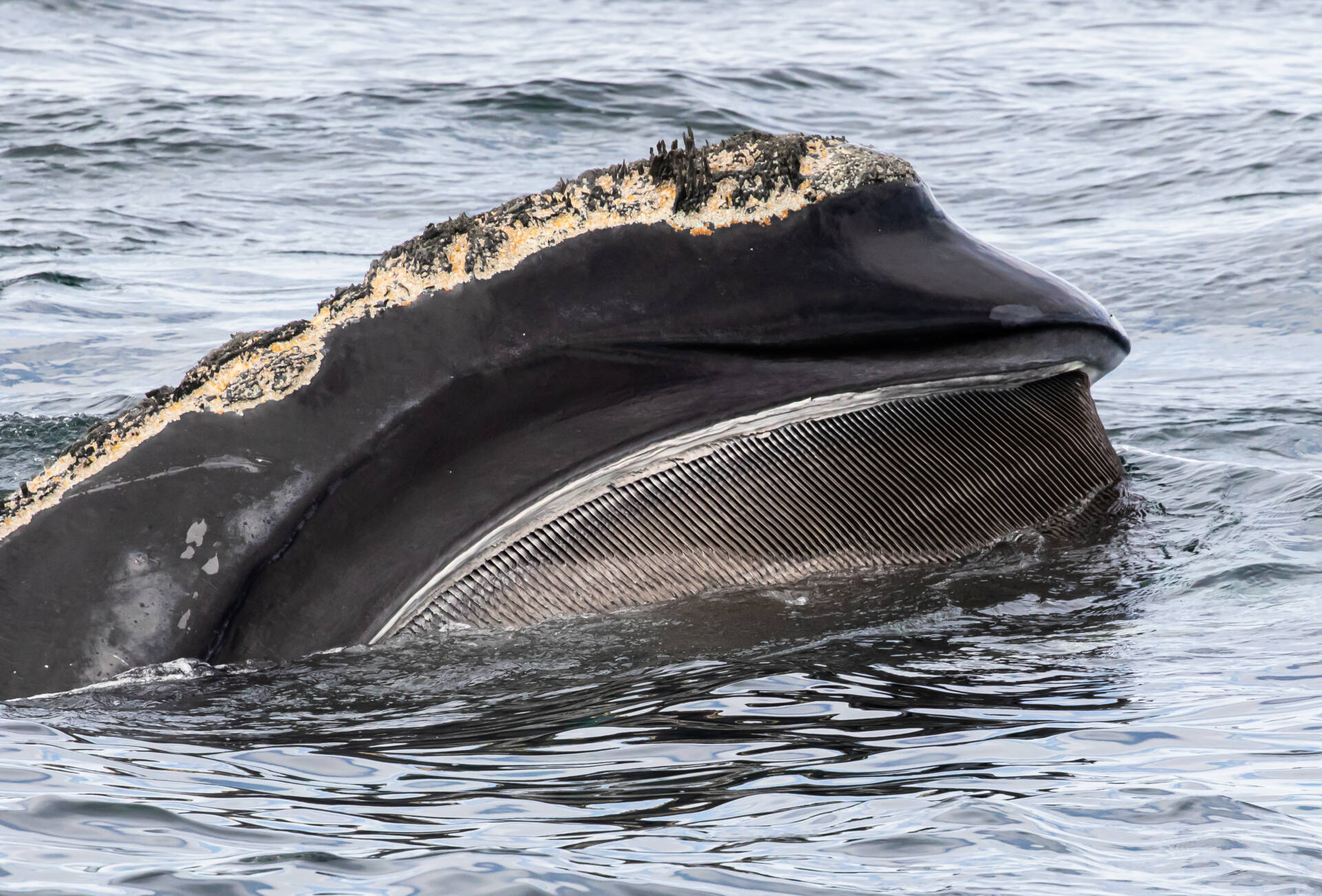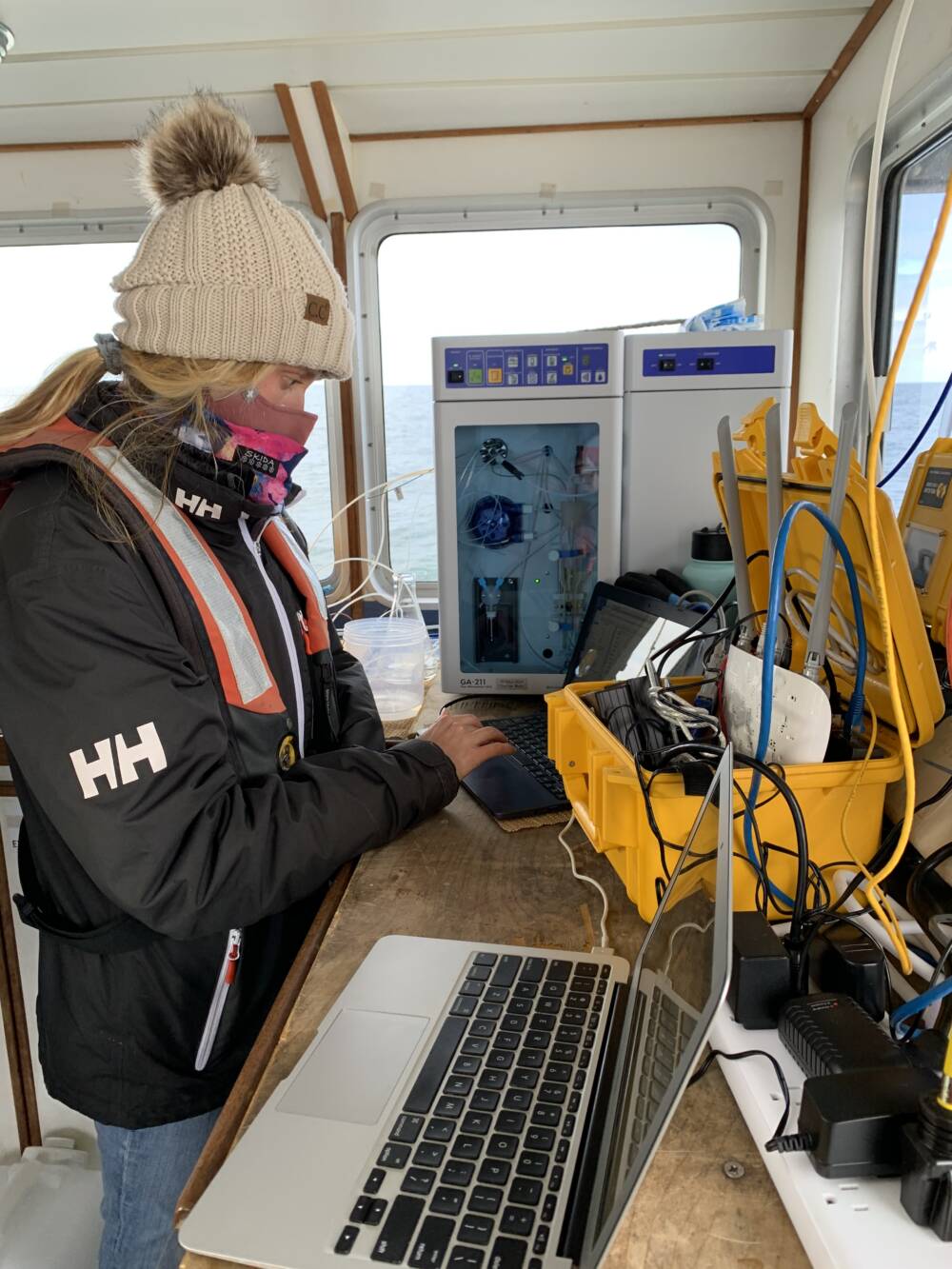Advertisement
To find right whales, some scientists want to find their food's food
Resume
North Atlantic right whales may be among the largest animals on Earth, but tracking them has been a notoriously difficult job for scientists. Now a group of researchers are setting their sights on something much smaller to try and save the species.
Right whales eat copepods, a tiny zooplankton that in turn eats microscopic plants known as phytoplankton. When the zooplankton crunch down on the tiny plants, the phytoplankton release a gas. By tracking this gas, researchers could become better at predicting the whales’ next location.
Right whales are critically endangered and at risk of extinction. Most whale deaths happen because of encounters with boats and fishing gear, so it’s very important to know where they will be to alert people.
The whales are hard to track with current technology: radio tags often fall off and scientists don’t want to use more invasive tracking methods. So they're studying their food as a way to understand whale behavior. And in Cape Cod Bay, researchers have a unique opportunity to study their feeding habits because right whales come in large numbers at predictable times relatively close to shore.

A team of researchers is following the whales in the bay and measuring the amount of the gas in the water where they're feeding. The plant matter emit a gas called dimethyl sulfide, or DMS.
“The take home message here is that lots of copepods create lots of dimethyl sulfide, which makes it a very attractive place for right whales to go and eat,” said Dave Wiley, the research coordinator at National Oceanic and Atmospheric Administration’s Stellwagen Bank National Marine Sanctuary.
The researchers are about two years into the project and their preliminary data show that right whales do congregate near DMS. Now, their goal is to find the concentration of DMS where right whales start aggregating.
Then, the idea is to compare these measurements to satellite imagery — which shows a number of data points such as plant matter concentration — and determine how to which factors correspond to DMS values. Ultimately, they want to be able to use those images to predict when and where right whales are likely to appear.
“If we can, with confidence, say more DMS equals more whale and that starts at a certain DMS threshold, we can use this to protect right whales with management decisions,” said Dan Zitterbart, associate scientist at the Woods Hole Oceanographic Institution. He expects the research can be finished in two or three years.
After more than a century of being hunted for oil, the remaining right whales now face injuries caused by fishing lines and by boat strikes. Those injuries lead to premature deaths and have slowed reproduction — the number of new calves has been below average in recent years.
Hunting North Atlantic right whales has been banned since 1935, but the population has not fully recovered. In 2010, the numbers began to drop again, resulting in a population of only about 340 — and just 70 of them are breeding females. They are considered critically endangered and scientists are concerned they are on a path to extinction.

Wiley, with NOAA, says that with data about where the whales are feeding, they could manage human activity around the whales by slowing boats down, routing them around those areas and removing fishing gear.
“Our goal is to protect right whales without unduly restricting human behavior. And the best way to do that is with good information,” he said.
Knowing where the whales are and where they’re going will be even more important with climate change. Their food source is migrating and the whales are moving, too. And even though right whales are well protected in Massachusetts, it’s a challenge to expand regulations all over the North Atlantic Ocean without knowing more about their movements.
Scientists hope this work will help them predict where right whales will go. But it might be more complicated than that. Charles Mayo, director of the Right Whale Ecology Program at the Center for Coastal Studies in Provincetown, has sampled right whale food for forty years and studies these copepods.
“There's a clear indication in our data that they are focusing on three different forms of the copepods,” he said, adding that more research needs to be done to determine if all of these food sources are correlated with DMS.
He says researchers still need to find out if whales rely mainly on DMS to find food. And even if they do, scientists don’t know which locations with high levels of DMS whales will seek out.
“There may not be concentrations of whales —even if at all works — because they may be 100 miles over there in an even better spot,” said Mayo.
The ocean is a complex environment, he said, and the whales are responding to multiple factors to search for food.
“We're ways away from being able to coalesce all that. But it's the kind of work that has to be done because we need to know where the whales are,” he said.
This segment aired on May 17, 2023.
